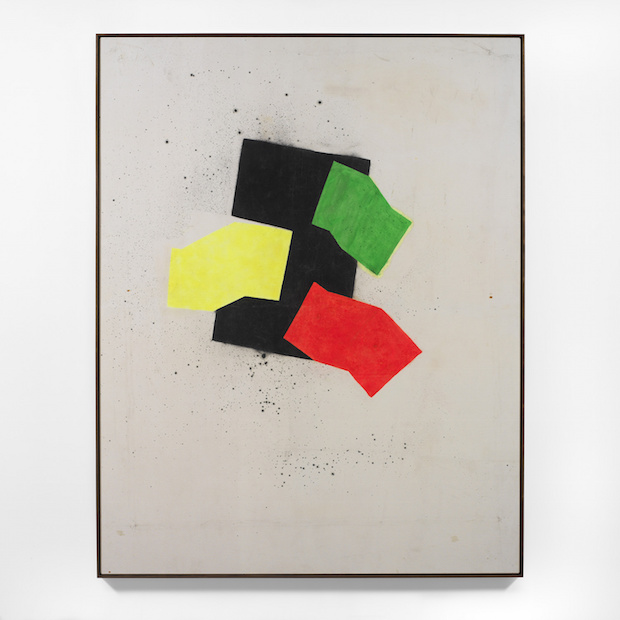One of the most interesting – and challenging – shows next year will be the Serpentine’s double-look at John Latham (2 March–21 May). Latham, sculptor, conceptual artist and intellectual provocateur died in 2006, but his reputation seems to be getting ever stronger as a younger generation of artists catch up with his ideas. These reach back well before the Destruction In Art Symposium of 1966, the year that Latham was sacked from St Martin’s School of Art for reducing the contents of Clement Greenberg’s book Art and Culture to a phial of chewed pulp. In the spirit of Latham’s belief in art as a continuous practice, while the main gallery will show a selection of Latham’s one-second drawings (he discovered spray painting in 1954), scarified book sculptures, installations, public art projects and filmed performances, the Sackler will be given over to a generation of younger artists whose work was made with an affinity for Latham’s philosophy and practice.
Red, Green and Yellow (1967), John Latham. The John Latham Estate, Courtesy Lisson Gallery, Photo: Ken Adlard

The Serpentine show is good news for Flat Time House at 210 Bellenden Road, Peckham, where Latham lived, worked and propounded his ideas, and which he declared a living sculpture in 2003. In 2008 Flat Time House became a gallery, education space, Latham archive and offered artist’s residencies, but it closed last July. Since then its future has been in doubt, with the possibility of this unique contribution to the Peckham landscape being sold for development. While the situation is being resolved, Flat Time House will reopen in March, and host a series of events in parallel with the Serpentine celebration.
It hasn’t been announced yet, but we can also look forward to another lively Peckham programme at Bold Tendencies (May–September), which since 2007 has turned the top of a semi-derelict multi-storey car park into a must-visit site for art and live events. Its future, too, was in doubt, but while progress is being made on turning the lower floors into a ‘cultural workspace’, Bold Tendencies has been given a four-year lease on the top floors. Last year’s highlight was a BBC Prom. I expect it to be back in 2017.
Robert Hewison’s most recent book is Cultural Capital: The Rise and Fall of Creative Britain (Verso).
Keep up with Apollo’s 12 Days selection of art highlights here.